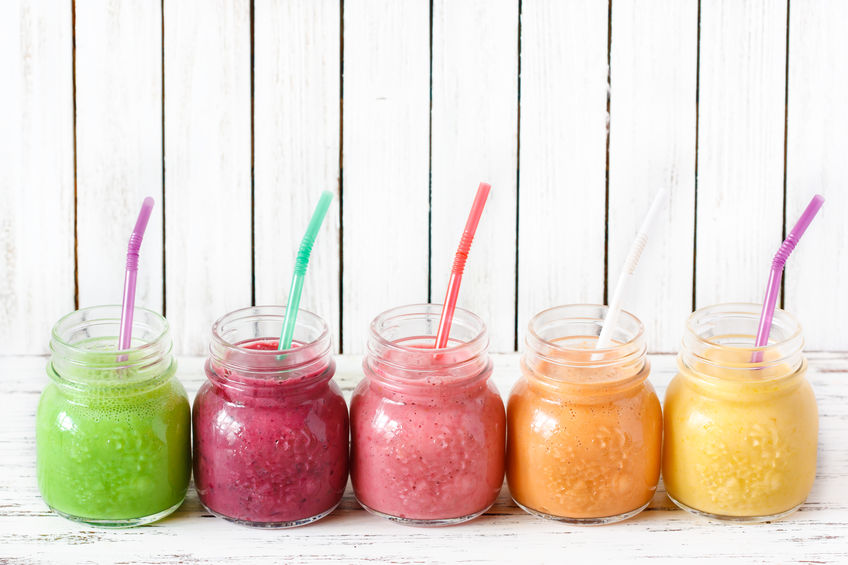By John Salak –
Most people equate the iconic smoothie with wellness, good health and sound nutrition. There are a lot of good reasons for this. Just its name, smoothie, gives off a feelgood vibe that is kind of reassuring. Then consider that a smoothie—whether homemade or store bought—is usually stuffed all sorts of fruits, vegetables, nuts, seeds and juices that dish up great taste, fuel, vitamins, fiber, proteins and antioxidants. What’s not to like or worry about?
Unfortunately, there are a lot of ways to make a smoothie and sometimes, maybe too often, ingredients are slipped into the mix that add unwanted calories, fat or create other issues. It is a problem that increasingly plagues smoothie makers and drinkers.
Smoothies generally come in three different basic forms, according to Healthline.com.
Fruit smoothies. These are made with various blended fruits and mixed with fruit juice, water, milk, frozen yogurt or ice cream.
Green smoothies. Built from leafy green vegetables and fruit blended, green smoothies are then combined with water, juice or milk.
Protein smoothies. This drink’s base usually starts with one fruit or vegetable and a liquid. A protein source is then added, such as Greek yogurt, cottage cheese, silken tofu or a protein powder.
Despite their inherent benefits, Runner’s World, for example, warns that while any of these smoothies may taste great and provide athletes with body fuel, they can also be a calorie bomb if made without care. “It can go either way, and that depends on the nutrient profile,” explained nutritionist Keri Gans. “Too many calories and added sugar, with less than adequate protein, and your smoothie can surely wind up being the latter.”
Britain’s Heart Matters magazine was also quick to add that smoothies alone do not comprise a balanced diet nor do multiple daily drinks count for more than one of an individual’s daily recommended five portions of fruits and vegetables. “If you blend fruit, the natural sugars are released from within the cell walls of the fruit and become free sugars. Free sugars include any added sugars, including honey and maple syrup, and are the kind we should all be cutting down on to protect our teeth as well as lower our energy intake to help maintain a healthy weight,” Heart Matters added.
Another problem comes from blending in fruits or vegetables. This process reduces the amount of natural fiber that would otherwise be consumed by eating fruits or vegetables raw or cooked.
Smoothies, of course, are not completely unhealthy and can occupy a very noble position in a balanced diet. Insider.com also reported that they “certainly got some genuine advantages over less nutrient-dense, more dessert-like breakfast foods.” Problems arise, however, when smoothies are overloaded with fruits and other ingredients that drive up their calories and sugar content. Leah Kaufman, a registered dietitian at NYU Langone’s Weight Management Program, in fact, told Insider.com that this occurs all too often in drinks made at smoothie shops. She estimates these retail outlets usually add up to six times the recommended amount of fruit in their drinks in order to improve their taste and texture. If sweeten yogurts, ice creams or honey is added, the sugar content drives even higher still.
“There’s a common misconception that smoothies are inherently low-calorie snacks, but some smoothies pack over 1,000 calories depending on their size and ingredients,” reports Healthline.com. With this is mind, even with relatively healthy ingredients, it is important to consider why and when a person is drinking a smoothie.
“Generally, a 200–300-calorie smoothie with 10 grams of protein is a great snack, whereas a 400–800-calorie smoothie providing at least 20 grams of protein is better suited as a meal replacement. It’s best to assess your goals and calorie needs to determine your specific needs,” Healthline.com added.
Unwanted calories and fats, among other items, are not the only areas of concern. Washington University’s School of Medicine recently warned that high-protein diets, which includes adding protein powder to smoothies, may lead to plaque buildup in arteries, which can increase the risk of heart attacks.
Ultimately, smoothies don’t need to be removed from anyone’s diet or enjoyment. But moderation and regulation are the keys to building healthy drinks. A general consensus on healthy smoothies starts with using whole foods that contain little or no added sugars and then including a balanced amount of carbs, fiber, protein and healthy fats.
Using the right liquid base is also essential. There are lots of options, but sound choices would include, among others, nonfat Greek yogurt, unsweetened almond milk, unsweetened coconut water, fresh squeeze orange, lemon, lime or grapefruit juice and even unsweetened rice drink.
So, relax and chill. Enjoy a well-built smoothie.












